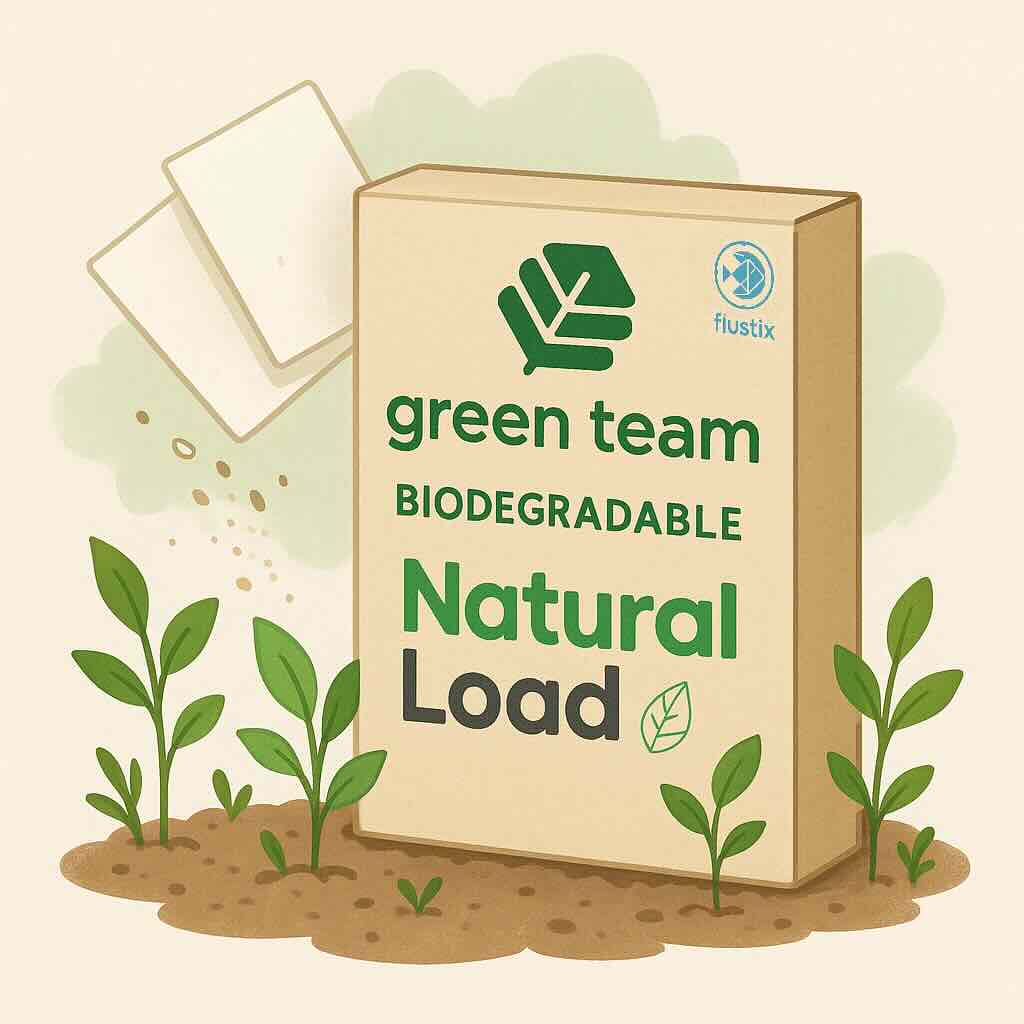How do detergents work? And why Natural Load® is a sustainable alternative

When it comes to cleaning, detergents are present in almost every household. But have you ever wondered how they actually work? Or whether all that abundant foam really means cleanliness? At Green Team, we believe that understanding what we use is the first step toward caring for our health and the planet.
Water does the cleaning: The real role of detergent
As contradictory as it may sound, water is the primary cleaning agent. What detergents do is make water’s job easier. Surfactants (also called active compounds) are the key ingredients: they are molecules with one part that loves water (hydrophilic) and another that repels it but binds to grease (hydrophobic). Thanks to this structure, surfactants separate dirt from clothes and water, helping grease, grime, and dust particles break free and remain suspended in the water, so they can be rinsed away.
A common example is sodium lauryl sulfate (SLS), which produces a lot of foam but isn’t very eco-friendly. That’s why we use glucosides, derived from coconut or corn, which are gentle and break down easily.
The big lie about foam
Many modern detergents also incorporate enzymes, which serve very specific functions. These proteins break down complex residues, making them soluble or easier to remove with water.
So, while surfactants separate dirt from surfaces, enzymes break it into smaller fragments. This combination of physical and biological action is what truly cleans, not the foam.
It’s common to think that more foam means more cleaning, but that’s a myth. Foam doesn’t clean. In fact, it’s harmful both to the environment and to the proper functioning of washing machines.
Many detergent brands use compounds specifically designed to create foam, such as 1,4-dioxane. Though this ingredient may result from production processes rather than being an intentional additive, it appears in conventional formulas and is a major concern:
- Its biodegradation and exposure to UV rays turn it into a toxic substance, potentially carcinogenic and harmful to marine life and the natural microbiological balance of water bodies. Foam also damages the sensors in modern washing machines (especially high-efficiency, or HE models), preventing them from accurately measuring water levels. This reduces washing quality, damages fabric fibers, and creates a false perception of cleanliness.
- Finally, foam hides the true state of the water, making it impossible to see whether dirt has actually been removed.
In other words, foam is the worst enemy of the environment and your washing machine. Paradoxically, it’s used more in low-end detergents because it “sells” a visual illusion of cleanliness, even when the actual performance is poor.
What about microplastics?
Some conventional detergents contain microplastics as abrasives, stabilizers, or slow-release capsules. These tiny particles aren’t easily filtered out in wastewater treatment plants and end up in rivers, lakes, and oceans. There, they harm marine life and eventually make their way back to our tables through the food chain.
That’s why at Green Team, we developed Natural Load®, a concentrated detergent sheet formula that leaves no microplastic residues, neither on your clothes nor on the planet. It is certified Plastic Free by FLUSTIX, awarded by DIN CERTCO. Its composition includes coco glucoside and is designed to produce just the right amount of foam, which is fully biodegradable.
Plus, by coming in sheet form, we avoid unnecessary plastic packaging, promoting truly sustainable cleaning, from the package all the way to the drain.

